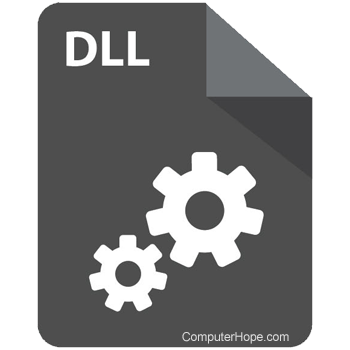

- #Microsoft dll files how to
- #Microsoft dll files code
- #Microsoft dll files windows 7
- #Microsoft dll files windows
Leave the default Location and Solution name values. Enter MathLibrary in the Name edit box to specify a name for the project. In the left pane of the New Project dialog box, expand Installed > Templates, and select Visual C++, and then in the center pane, select Win32 Console Application. On the menu bar, choose File > New > Project. To create a DLL project in Visual Studio 2015 and older versions
#Microsoft dll files windows
We recommend the latest version of Windows for the best development experience.
#Microsoft dll files windows 7

#Microsoft dll files how to
For information about how to create DLLs for use with. For information about creating C++ DLLs for use with programming languages that use C-language linkage conventions, see Exporting C++ functions for use in C-language executables. For more information about implicit linking and explicit linking, see Determine which linking method to use. If your classes are plain-old-data style, you shouldn't run into this issue.įor links to more information about DLLs, see Create C/C++ DLLs in Visual Studio. This restriction applies to DLLs, but not static libraries. It's easy to make hard-to-diagnose errors when exporting classes, since everything referred to within a class declaration has to have an instantiation that's also exported. Second, it avoids some common pitfalls related to exported classes and member functions. The client app doesn't have to be written in C++. There are two main reasons for this: First, many other languages support imports of C-style functions.
#Microsoft dll files code
Rest assured, you can use MSVC and Visual Studio to do all these things.Įven though the code of the DLL is written in C++, we've used C-style interfaces for the exported functions. It doesn't show how to create a resource-only DLL, or how to use explicit linking to load DLLs at run-time rather than at load-time. The code doesn't show the use of C++ DLLs by other programming languages. This walkthrough doesn't cover some common situations. This linking lets the app call the DLL-supplied functions just like the functions in a statically linked library. The client app uses implicit linking, where Windows links the app to the DLL at load-time. It can be called from apps written in other programming languages, as long as the platform, calling conventions, and linking conventions match. This walkthrough creates two Visual Studio solutions one that builds the DLL, and one that builds the client app. The MSVC compiler implements some Microsoft-specific extensions to C++ to provide this extra information. Windows requires extra information that isn't part of the standard C++ compilation model to make these connections. Unlike a statically linked library, Windows connects the imports in your app to the exports in a DLL at load time or at run time, instead of connecting them at link time. A client app imports the names to use those variables, functions, and resources. Like a statically linked library, a DLL exports variables, functions, and resources by name. Use the functions and variables imported from the DLL in the console app. You'll also get an introduction to some of the programming techniques and conventions used in Windows DLLs.Īdd exported functions and variables to the DLL.Ĭreate a console app project in Visual Studio. Then you'll create a console app that uses the functions from the DLL. In this walkthrough, you'll create a DLL that implements some math functions. DLLs can even make it easier to service and extend your apps. You can use them as a way to share code and resources, and to shrink the size of your apps. DLLs (also known as shared libraries in UNIX-based operating systems) are one of the most useful kinds of Windows components. Then it shows how to use the DLL from another C++ app. This step-by-step walkthrough shows how to use the Visual Studio IDE to create your own dynamic link library (DLL) written in Microsoft C++ (MSVC).


 0 kommentar(er)
0 kommentar(er)
